User behavior analysis tools (UBA tools) became a daily reality for companies like Apple, DHL, and Amazon. Those market giants use the knowledge of users' frustration provided by the analytics software to drive high revenues and growth rates.
This article discusses the reasons for implementing user behavior analytics tools into your business. Shall we?
A Short History of User Behavior Analytics
User Behavior Analytics is a branch of behavior data analysis software that was introduced into marketing when product analytics provided a systematic report describing server activity that gave marketers greater insight into the people who were using the site.
The insights into user interactions can be analysed and optimized to maximize conversion rates and increase revenue.
Why should you use user behavior analytics tools?
User behavior analysis is a powerful tool in your business development. It allows you to focus primarily on the most valuable customers, optimize your marketing activities and increase consumer retention (or reduce churn rate, if you please).
Good tools and software supporting the analysis of user behavior will also allow you to collect and process only the data that will be relevant to your business goals.
Using user behavior analytics software, lets companies map the exact way how customers interact with each point of their journey. Whether it's a purchase, abandoned shopping cart, or actual behavior throughout the whole visit. The tools enable observation and thorough analysis of users' behaviors in the context of your marketing content or the product itself.
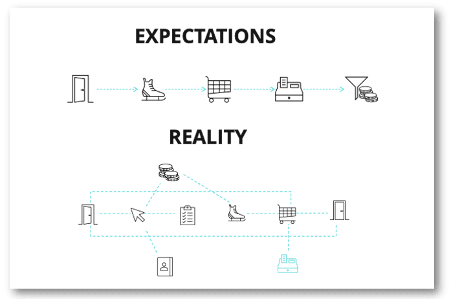
What will you measure with user behavior analytics software?
Most of all, user behavior analysis let you measure what's most elusive – users' frustrations. You'll be able to discover pain points they're experiencing when browsing your website or interacting with your product.
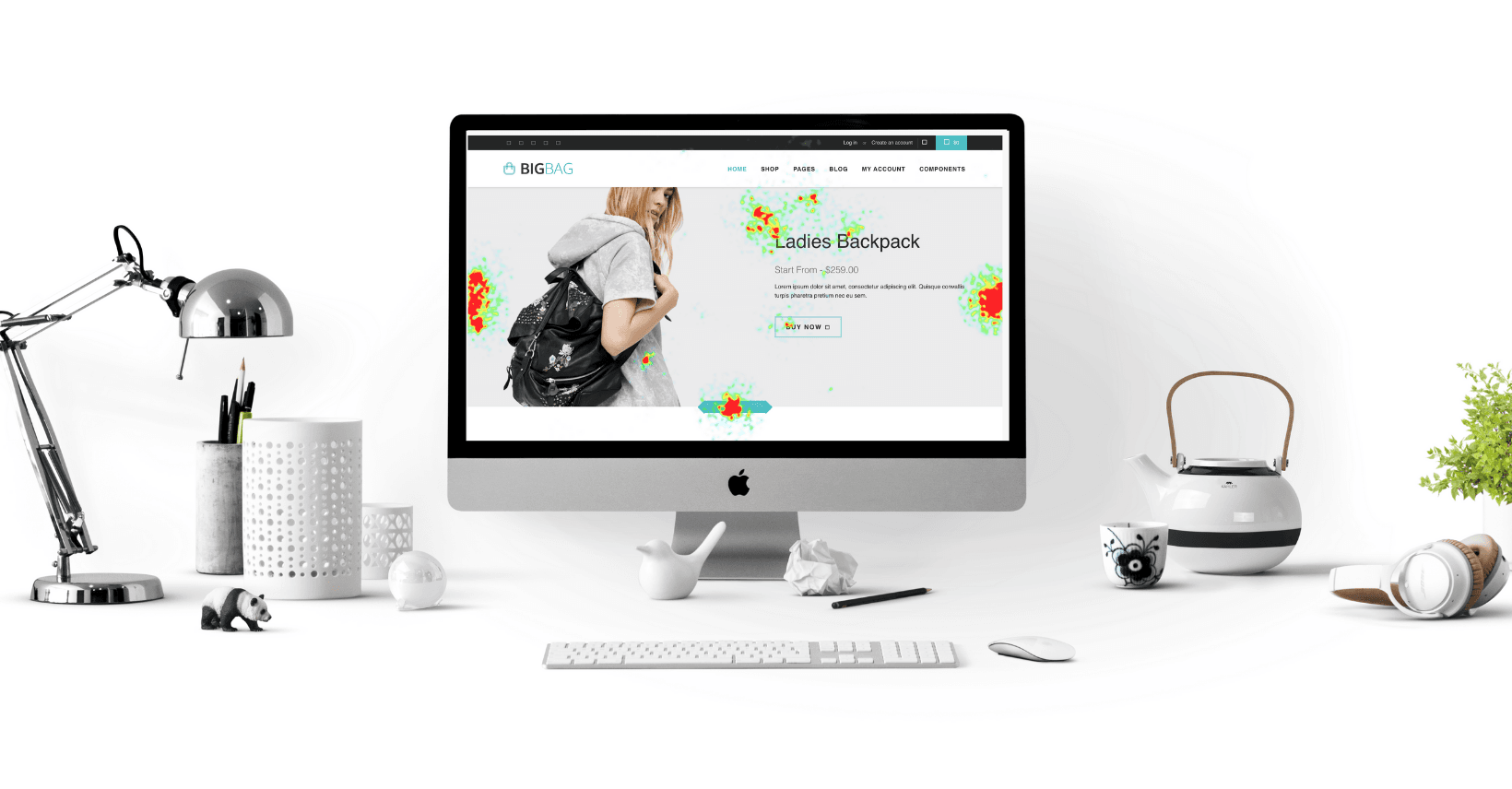
Behavioral analytics tools come in handy whether you're an eCommerce or Sales Expert, Digital Marketer, UX Manager responsible for product development, or a Content Creator. Data about your customers' experiences and behavior lets you:
- create very accurate customer segments based on their experiences and expectations,
- track customer frustrations at every stage of the sales funnel,
- spot and instantly analyze conversion drops,
- identify communication channels with the highest potential for optimization,
- find bottlenecks in your products that may cause users pain points,
- design content architecture suited to users' needs.
What are behavioral analytics tools?
Analytical tools can be applied in behavioral analysis to understand user behavior. It monitors web and application activities and provides information for the improvement of user experiences. In behavioral analytics software, behavioral information has many uses.
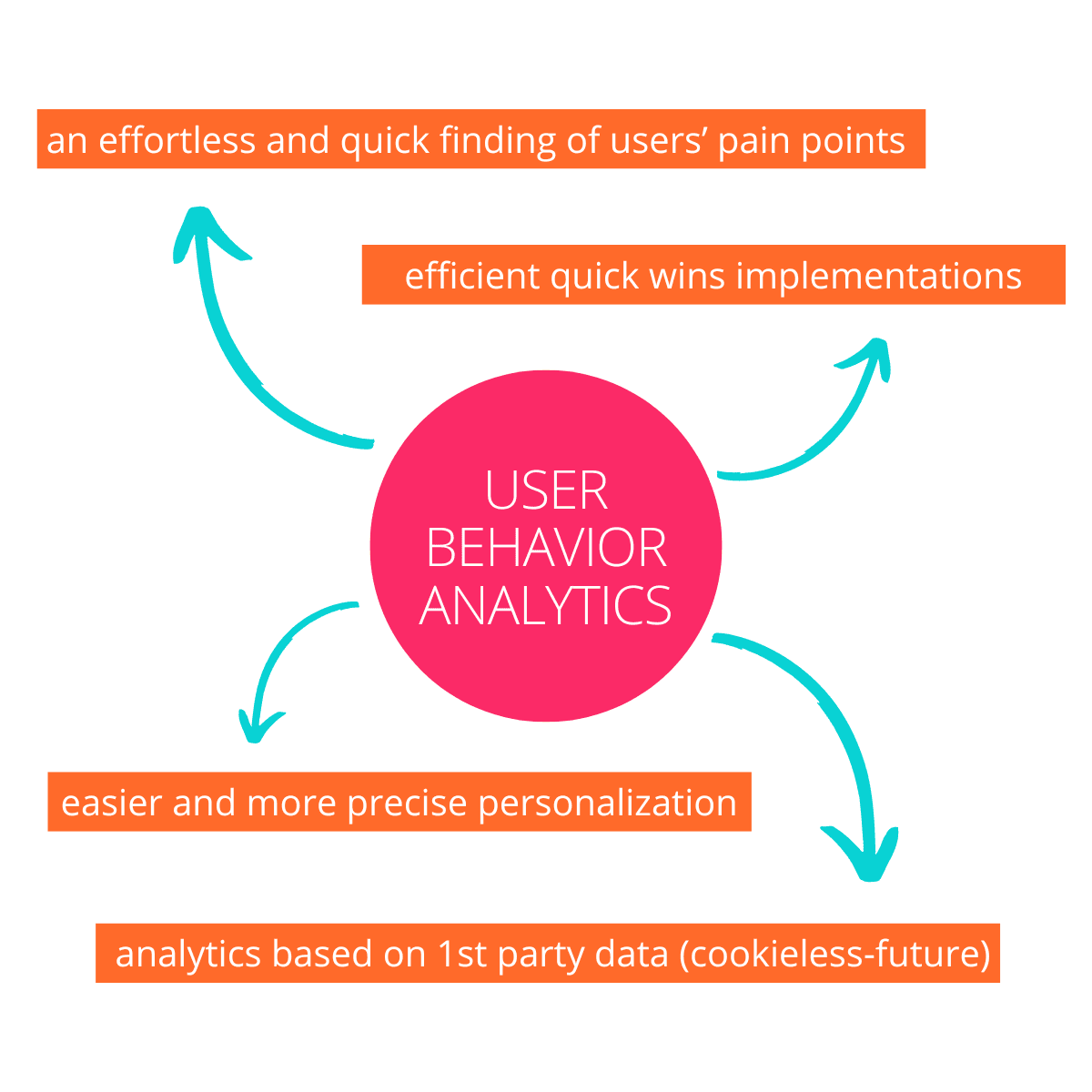
User behavior analysis tools are usually based on mechanisms that allow you to “peek” at your customers. Be it through heatmaps, visit recordings, or using smart algorithms that recognize behavior patterns (like cux.io).
The more accurately the software is able to observe user behavior, the more accurate the data you will be working on will be.
User Behavior Analysis Tools: Key features
Particular analytical software differs from each other in both the methods of data collection and specific features. However, in most cases, you will be able to observe your users' behavior by:
User Behavior Analysis - Session Replays
Visit recordings allow you to look over your client's shoulders to see how they interact with your website or product. You will be able to follow clicks, mouse movements, or specific actions performed by the user.
Remember, however, that most user behavior analysis tools focus on single sessions, not entire visits!
User Behavior Analysis - Heatmaps / Linkmaps / Scrollmaps
Heatmaps graphically present the places where users are most active. Link maps focus only on tracking activity around clickable elements like CTA buttons or menu tabs. Scroll maps show how “far” users scroll your page.
Remember that many tools call heatmaps what is actually a link map – they only focus on clickable elements, thus not giving you a complete picture of user behaviors.
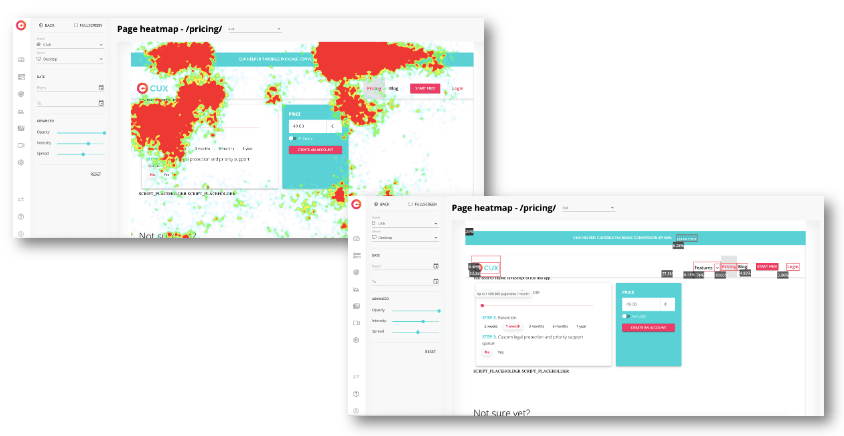
User Behavior Analysis - Web analytics
Web analytics gives you access to pretty basics info about your users, like what devices and operating systems they are using or which countries they come from/log from.
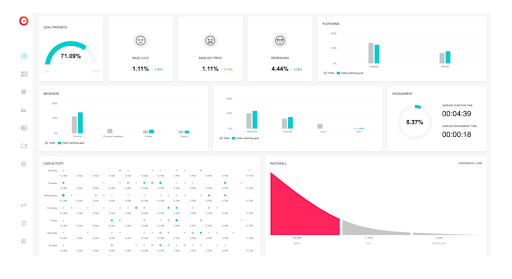
Remember that not every user behavior software will give you info about the types of browsers users are using. This may be a game-changer for your marketing activities!
User Behavior Analysis - Engagement time
Engagement time is another basic metric that most UBA tools can provide you with access to.
Remember, however, that many user behavior analytics tools do not distinguish between active time and actual engagement time. This way, you can get deceptive results (e.g. the user had your website opened for 10 minutes, but was active only for 15 seconds).
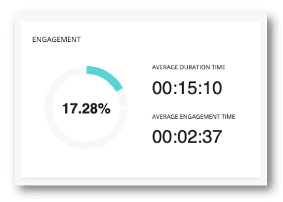
How does UBA work with artificial intelligence?
User behavior analytics uses a broad set of AI/ML techniques such as supervised machine learning – a set of known good and known bad behaviors that feed to the algorithm.
cux.io created its own metrics, based on machine learning mechanisms, which are able to independently recognize and define repetitive behavioral patterns of users. The tool is also capable of detecting and highlighting those Experience Metrics for specific business goals, thus saving you time on analysis.

By implementing Experience Metrics tracking into your user behavior analytics routine, you'll be able to:
- immediately find the user’s frustrations and pain points,
- create behavioral profiles for your target groups,
- refine the personas and user segments in terms of their behavior,
- map REAL customer journeys for various communication channels.
How to choose the right user behavior analysis software?
User behavior analytics may be a game-changer for your business development. That's why deciding on the right UBA tool should be a well-judged process. You should take into consideration factors such as features, technological advancement, used AI / ML algorithms, interface, quality of service and support, and affordability.
You should also think about what purpose your behavior analytics tool should serve. Do you want to determine the best user segments, use behavioral data for advanced content management, or simply track user activity in real-time?
Behavior analytics with CUX
Using cux.io as your user behavior analytics tool of choice comes with many advantages. It enables you to not only combine quantitative data with qualitative conclusions but also interpret metrics in the context of your business goal.
You can use CUX's behavioral insights to optimize your product, spike up the conversion rates, and even make your marketing efforts more precise and efficient.
The most important UBA features in CUX:
- Pixel-perfect heatmaps. CUX's heatmaps and link maps visually present users' actions on your website.
- Visit Recordings. You can track user behavior with visit recordings. You can also filter them according to your analytical needs.
- User segmentation. CUX makes user behavior analytics easier thanks to a wide range of filtering and user segmentation.
- Experience Metrics. By using machine learning for predictive user behavior analysis, CUX enables you to immediately find places that may inhibit your conversion.
- Bigger picture. Unlike Google Analytics, CUX focuses on user behavior throughout the whole visit, not a single session.
- Retroactive data collection. The analytics tools let you track users' behaviors even with historical data.
- Auto-captured events. You don't need analytical or technical skills to start tracking user activity, the tool will do it for you.
- Goal-oriented user analytics. The tool automatically selects behavioral data in accordance with its relevance to your business goal.
Read more on User Behavior Analytics in CUX.

There are lots of user behavior analytics tools available on the market. And this should not come as a surprise. It's a perfectly reasonable approach for businesses to want to understand its user better and be able to conduct advanced behavior analytics.
When deciding on your own UBA tool implementation, be sure to be clear about your analytical goals. This knowledge will help you make the final decision in choosing the best software.